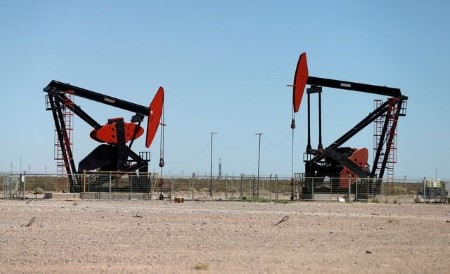




Monthly Economic Update: One for the road
 DOWNLOAD
DOWNLOAD

Inflation Update: Still low, still slow
 DOWNLOAD
DOWNLOAD

Philippines Trade Update: Exports momentum continues
 DOWNLOAD
DOWNLOAD


Wall Street sees China slump as pump relief, to a point

ORLANDO, Fla., Aug 17 (Reuters) – A dismal batch of indicators this week significantly darkened the economic clouds over China, but there is a clear silver lining for Wall Street and world markets: falling oil prices.
As the slowdown in the world’s largest crude importer pushes oil lower, inflation pressures have eased, giving the US Federal Reserve more leeway to ease up on its aggressive interest rate-hiking campaign and engineer the economic ‘soft landing’ it desperately desires.
Of course, there is a potential growth shock for the rest of the world that could intensify recession fears in the United States and elsewhere. Risk assets would struggle in a recession.
But investors’ glass is half full, and has been for around two months since the Fed’s June policy meeting and what increasingly appears to be the recent high in oil and ‘peak inflation’.
Brent crude fell 3% on Monday after Beijing’s data dump to its lowest since before Russia’s invasion of Ukraine in February, and Wall Street closed comfortably in the green. Oil fell a further 3% on Tuesday and the S&P 500 and Dow both rose to fresh four-month highs.
The inverse correlation between oil and Wall Street is the tightest it has been since March. When oil falls, the S&P 500 rises.
Cheaper oil has put markets in a sweet spot, and as Brian Jacobsen, senior investment strategist at Allspring Global Investments notes, the equity rally has been accompanied by an equally steady recovery in credit markets.
But he cautions that it could soon sour.
“At what point does it reflect demand destruction setting in? Demand destruction is not a good ingredient for a continued equity market rally,” Jacobsen warns.
Jacobsen reckons USD 85 a barrel is an important area. A break below could represent a less benign relationship between oil, inflation, demand and economic activity.
Brent’s decline of around 25% since June 14 has been accompanied lock step with a growing belief that the United States has reached ‘peak inflation’. A range of consumer and producer price indicators, and consumer inflation expectation surveys, all point in this direction.
POSITIVE SUPPLY SHOCK
Since its trough on June 17, the S&P 500 has rebounded nearly 20%, the VIX volatility index is under 20 for the first time since April, and high yield US credit spreads have tightened around 175 basis points.
Alan Ruskin at Deutsche Bank notes that in ‘normal times’ a steep decline in China’s economic performance would have a deeply negative impact on global activity. It accounts for over 40% of global demand in iron ore, coal, copper, aluminum, steel, nickel, and pork.
But the slowdown could also turn into a positive supply shock – weaker demand from China leading to lower commodity prices and reduced bottlenecks. Softer commodity prices are already easing inflation pressures and inflation expectations.
“Initially at least, the aggregate impact on global risk will be a positive, as global assets take their lead from the knock-on impact to US markets in particular. This favorable risk influence is stronger now, precisely because it fits with the … ‘peak inflation’ thematic,” Ruskin wrote this week.
This relatively benign ‘Goldilocks’ scenario – falling oil prices, easing inflationary pressures, rising risk assets – could get another fillip if a US-Iran nuclear deal is struck, which would allow more Iranian oil exports.
But these arguments and scenarios are circular. Even lower oil, higher stocks, and narrower credit spreads would ease overall financial conditions without fail. This is exactly what the Fed is trying to avoid, and Jerome Powell and co might be tempted to push rates even further into restrictive territory.
That’s when ‘demand destruction’ fears would likely start to dominate investors’ thinking. We might get there, but we are certainly not yet.
(By Jamie McGeever; the opinions expressed here are those of the author, a columnist for Reuters)
This article originally appeared on reuters.com





 By Reuters
By Reuters